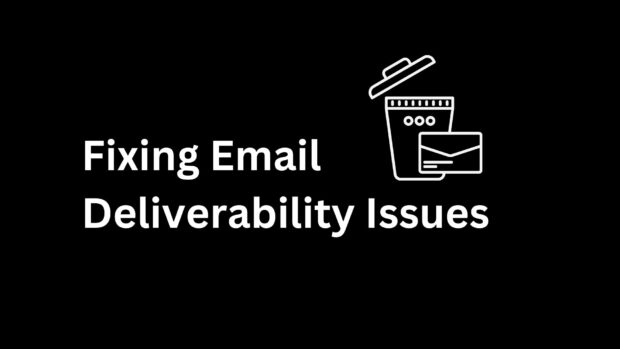Email deliverability is one of the most important factors in email marketing.
The ability to deliver emails to the recipient’s inbox is one of the most important factors to consider for successful email marketing. Therefore, for you to succeed in marketing, you must ensure that you follow all the email deliverability requirements and standards set by email providers like Gmail and Yahoo. These providers use various signals to determine the validity of an email, including content type, user engagement, domain ownership authentication, etc. Below are key steps you should take to improve email deliverability:
1. Domain Authentication
Domain authentication is crucial for email delivery. Email Service Providers (ESPs) use authentication protocols to verify sender identity and prevent spam from reaching recipients’ inboxes. Emails failing these protocols have a higher chance of being sent to the spam or junk folder. Key authentication protocols include:
Domain Keys Identified Mail (DKIM): Used to verify that the sender’s email owns the domain or has permission to send emails via the email domain. For instance, if an email originates from john@example.com, email servers use DKIM to verify that the domain example.com sent the email.
Sender Policy Framework (SPF): Specifies which mail servers are authorized to send emails on behalf of the sender’s domain.
2. IP Address Reputation
An IP address with a history of spam complaints is more likely to have its emails flagged as spam by the recipient’s email servers. Emails from IPs with poor reputations may not even make it to the recipient.
If you are on a shared IP address, you don’t have control over other senders’ behaviour. The only option you have is to move to a dedicated IP address.
You can use tools like Spamhaus, Google Postmaster Tools or Outlook Smart Network to check domain or IP reputation.
3. Email Collection Method
Only send emails to users who have explicitly opted in to your newsletter. Ideally, collect subscribers through double opt-in. This ensures you are adding legitimate email owners to your email list and also protects against spambots that often subscribe to forms to exploit vulnerabilities.
4. Email List Health
Regularly remove invalid email addresses from your email list. These include emails that are deactivated, suspended, full, or non-existent. You can use email cleaning tools to remove unengaged or invalid subscribers.
One important info you should be aware of is that ESPs monitor emails sent to deactivated accounts. Repeatedly sending emails to such accounts might indicate that you are a bot, resulting in your domain being blacklisted.
5. Email Complaints
Monitor and address spam complaints proactively.
If users frequently mark your emails as spam, identify the root cause. It could be due to irrelevant content or malicious spambots subscribing and automatically flagging your newsletter emails as spam. Identify email patterns of bot subscribers and block them.
Also, change your content strategy if recipients seem uninterested.
If you do not address spam complaints, then it will reach a maximum complaint rate set by email providers, leading to your account being suspended or blacklisted. For instance, Amazon SES may suspend your account if your complaint rate exceeds 0.5%.
6. Email Content
You might have heard of email spam trigger words checker tools, like this one we created. However, these days, email providers use patterns in email content for spam message detection rather than specific keywords.
Ensure your email content is high-quality and engaging. Maintain a balance between text, images, and HTML in your email messages.
7. Website Security
Sending emails from a secure domain is often overlooked but essential.
Ensure your domain has an SSL certificate (e.g., https://example.com). Avoid sending emails from domains with security warnings or that have been hacked.
While not mandatory, having a live website associated with your email domain builds credibility and improves deliverability.
8. Domain TLDs
Some TLDs, such as .ru and .xyz, are known to have a bad reputation. That is why business email providers block emails from .xyz domains from reaching the inboxes of their staff and clients.
According to Cloudflare Radar Email Security data, over 300 TLDs are associated with domains sending the highest volume of malicious and spam emails. The data indicates that .cyou, .sbs, .mn, .su, and .coupons top the list of TLDs linked to malicious email activity, while .sd, .bt, .mobi, and .pw are most associated with spam emails.
While a TLD might not significantly affect email deliverability for major providers like Gmail for personal use, it’s advisable to opt for reputable TLDs such as .com.
Check if you have met all email deliverability requirements using our free checklist tool.
